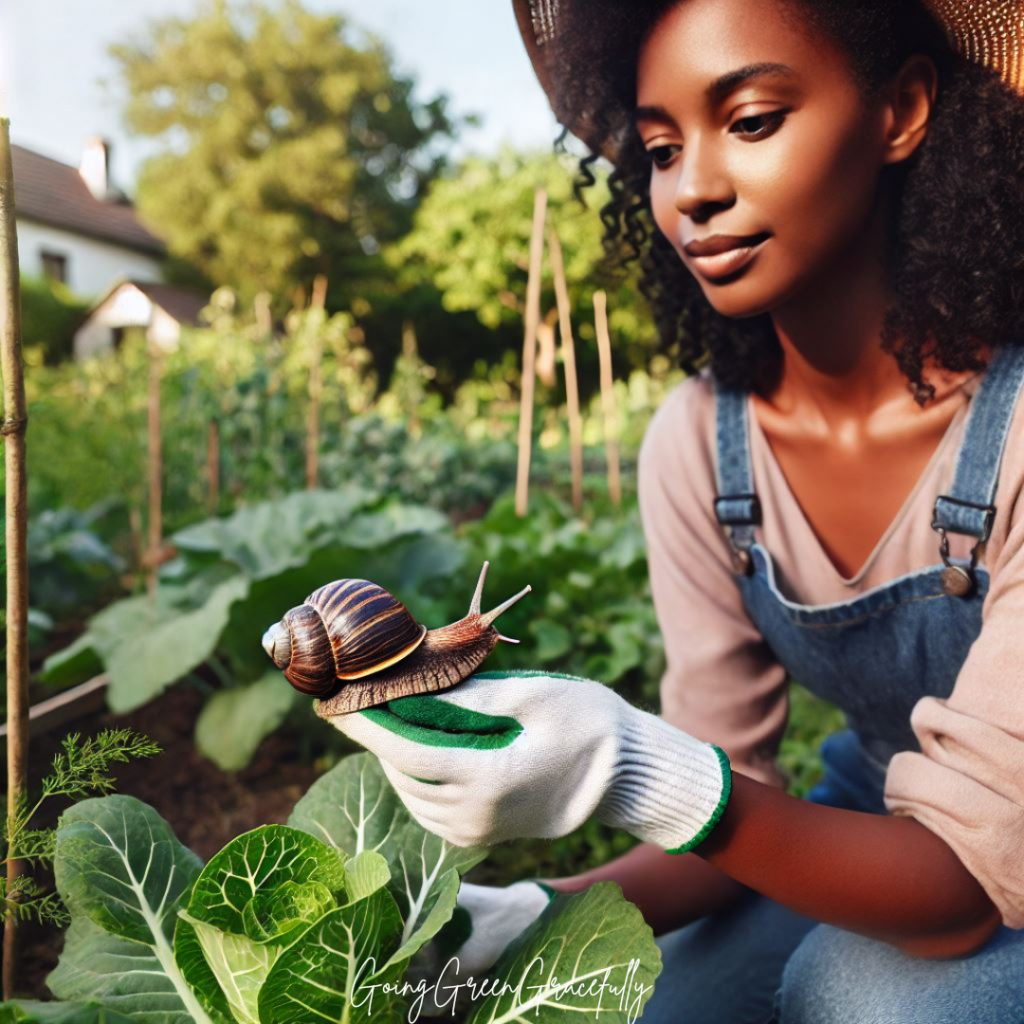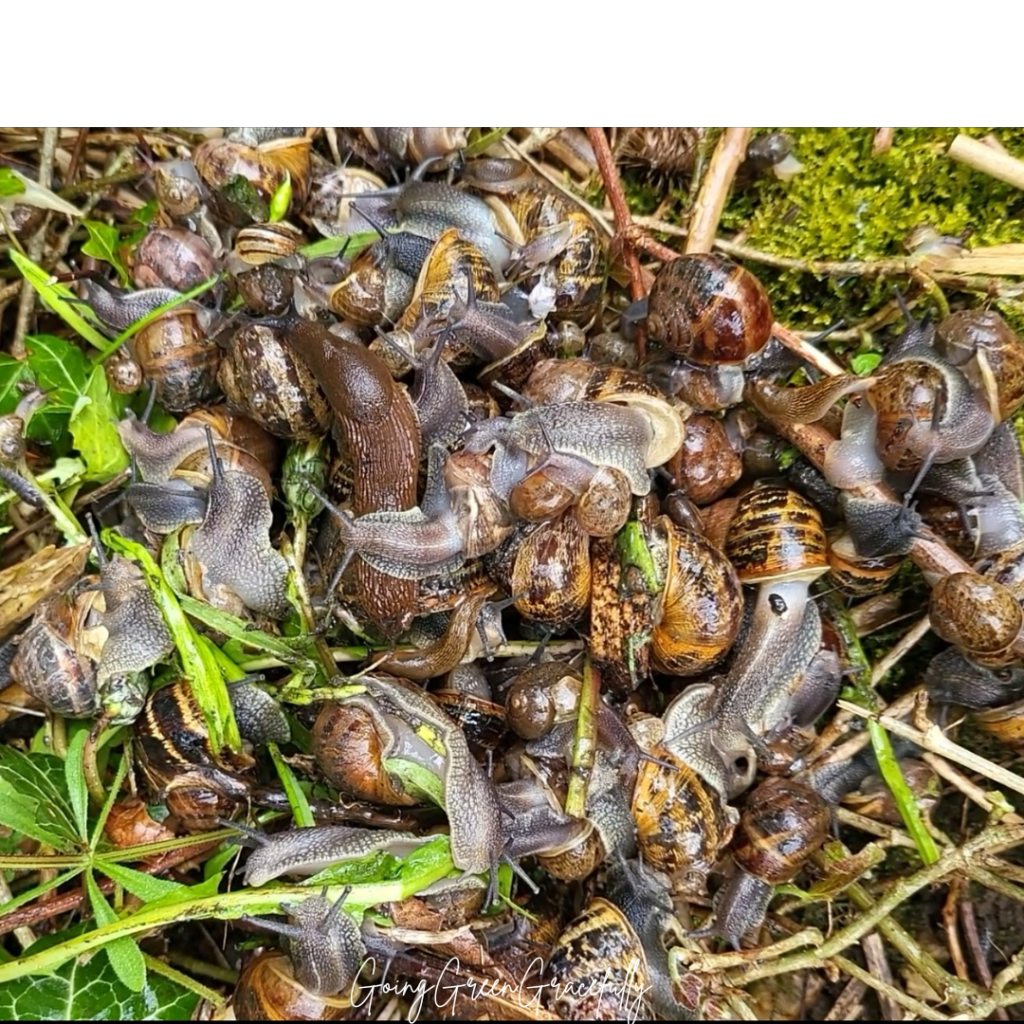
We have all struggled with snails and slugs, these little creatures that enjoy our fresh, wholesome produce as much as we do, sometimes decimating whole plants overnight. They are an integral part of the ecosystem and can be very difficult to get rid of, but is it possible to find a happy medium where we can co-exist?
Snails and slugs can be a gardener’s worst nightmare, especially for beginners. These pests can cause significant damage to plants by feeding on leaves, stems, and roots. If you find that the leaves of your vegetables or plants have been eaten overnight, it is very likely that you have slugs, snails or both in your garden. Both pests leave a slimy trail behind, which can help you identify their presence. Here are some ways in which you can deal with snails and slugs in your garden. You might need to try out a variety of methods to determine what works best for you.
Create deterrents or barriers
- Discourage slugs and snails from eating your plants by sprinkling crushed eggshells or coarse sand on the earth around them. The sharp edges are uncomfortable for snails and slugs to crawl over.
- If you grow plants that are especially prone to snail and slug damage, you can plant them in containers and place them out of reach on pot stands or tables.
- Wind copper plate or wire around the rims of pots, plant stands and garden beds. The copper reacts with the slime of snails and slugs, creating a mild electric shock that deters them.
- Diatomaceous earth is a natural powder containing about 80%-90% silica. It is abrasive to snails and slugs, causing them to dehydrate. You can reduce slug and snail damage to plants by sprinkling it around them.
Encourage natural predators
- Encouraging natural predators in your garden can help control snail and slug populations. Birds, ground beetles and amphibians like frogs and toads all eat slugs. You can attract birds by providing bird feeders and nesting boxes, and encourage beetles by gardening without pesticides. Creating a small pond or water feature will attract frogs and toads as well as other beneficial wildlife.
- Nematodes are microscopic worms that infect and kill snails and slugs. By introducing these beneficial organisms into your soil, you will reduce the population of snails and slugs in your garden. Nematodes can be bought online. and are usually watered into the soil in spring.
Remove snails and slugs manually
- Regular handpicking is an effective way to reduce the population of snails and slugs in your garden. Go out at night with a flashlight, and manually remove them from your plants. Wear a pair of gloves, or buy tongs to pick up the snails and slugs. Drop them into a bucket and then dispose of them in the wild. Molluscs have a homing instinct, so you need to take them far enough away from your home to deter them from returning.
- Traps can be used to capture the snails and slugs. A beer trap is a container buried in the ground and filled with beer. Snails and slugs are attracted to the yeast in the beer and will come to drink, and some of them will fall in and drown. There are also commercially available traps containing slug bait, which attract the molluscs in and then prevent them from escaping. The captured or dead slugs and snails need to be emptied each morning, and the trap refilled or reset in the evening.

Modify the way you garden
- Slugs and snails thrive in moist environments, especially where there are a lot of hiding places beneath rocks and vegetation. It is possible to reduce the snail and slug population by keeping the garden free from fallen leaves and plant debris. However this could also reduce the population of other beneficial creatures in the garden.
- Water plants that are especially prone to slug and snail damage in the morning rather than in the evening. The soil and leaves can then dry out during the day, making them less attractive to the molluscs at night when they come out to feed. Of course it will sometimes rain at night – I tend to go out with my torch on rainy nights for a slug and snail hunt!
- Consider providing an alternative food source for the molluscs. Some people put out slices of cucumber at night for the slugs and snails Another option is to include sacrificial plants in your planting scheme, such as marigolds, which grow easily and cheaply from seed. The slugs prefer to eat these rather than my vegetables. Be careful though – if you keep feeding the slugs they will reproduce and multiply, so you should definitely combine this with other methods of control.
Chemical control
- Iron phosphate pellets can be purchased in garden centers and sprinkled around plants. Snails and slugs ingest the pellets and stop feeding, eventually dying. They are labelled as safe for pets and wildlife, but it is best to use them sparingly and as a last resort.
In summary…
In a household backyard garden it is almost impossible to eliminate slugs and snails. However with the right strategies, you can manage and reduce their impact on your garden. I have found that a combination of the methods above, with the exception of pellets (which I do not use) keeps the mollusc population sufficiently in check to allow me grow a wide range of flowers and vegetables.
I have however chosen to stop growing certain plants, such as hostas, as they are a magnet for snails. On the other hand, I still grow lupins, because their flowers are just so pretty and I love them so much. It is a constant battle between the molluscs and myself to keep them from being devoured, but I am rewarded in June when they put on their magnificent display.
What works for you? How do you control snails and slugs in your garden?
